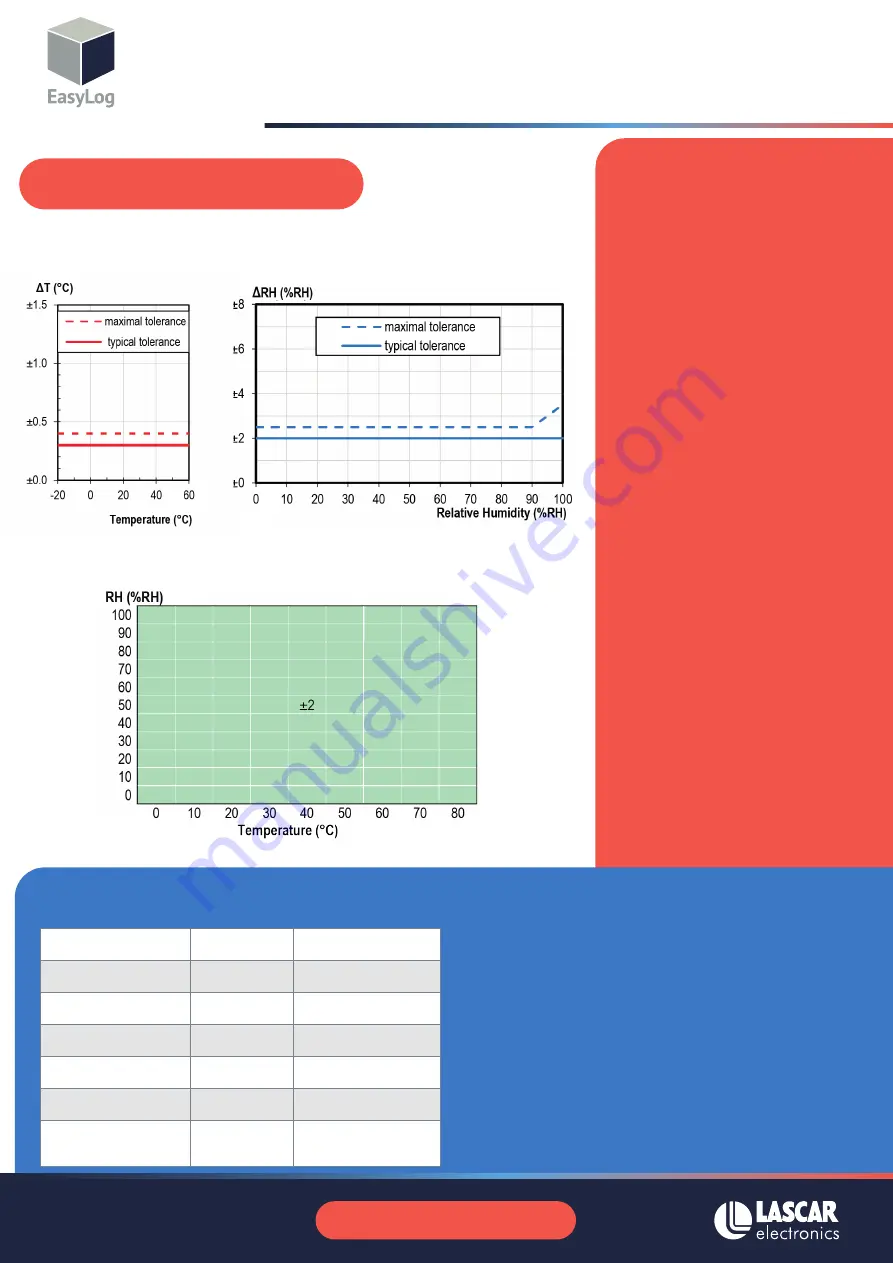
1
Exposure to CO
2
concentrations smaller than 400 ppm can affect the
accuracy of the sensor if the automatic self-calibration function is used.
2
Deviation to a high-precision reference. Accuracy is fulfilled by >90% of the
sensors after calibration. Rough handling or shipping reduces the accuracy
of the sensor. Accuracy is restored with the automatic recalibration feature.
Accuracy is based on tests with gas mixtures having a tolerance of ±1.5%.
3
Time for achieving 63% of a respective step function under test conditions.
Response times can depend on the operating environment in the
final application.
4
For proper automatic calibration the device has to be exposed to air with
CO
2
concentration 400 ppm regularly. Maximum accuracy drift per
year estimated from stress tests is ± (5 ppm + 2 % of reading). Higher
drift values may occur if the device is not handled according to
the instructions.
www.lascarelectronics.com
Issue 1 06/2022
EL-IOT-CO2
Carbon Dioxide WiFi Cloud-Connected Data Logger
Your data, anytime, anywhere
OPERATING CONDITIONS
The performance of the humidity sensor can
be affected by long-term exposure to operating
conditions at the extents of the logger’s range.
The sensor shows best performance when
operated within the recommended normal
temperature and humidity range of 5 to 55°C and
20 to 80%RH, respectively. Long-term exposure to
conditions outside the normal range, especially
at high humidity, may temporarily offset the RH
signal (e.g. +3%RH after 60h kept at >80%RH).
After returning into the normal temperature and
humidity range the sensor will slowly come back
within the calibration state by itself. Prolonged
exposure to extreme conditions may also
accelerate ageing.
When tracking changes in ambient conditions,
the response time of the humidity sensor in
your data logger is approximately 20 minutes to
reach 90% of the reading. However, if you are
measuring step changes in humidity (for example
if calibrating the product) it is advised that you
leave the unit for up to four hours to ensure that
it has enough time to settle at the new level.
It is worth remembering that the value of relative
humidity is of course sensitive to temperature
variation. As an example, at a relative humidity of
~90%RH at ambient temperature, a variation in
temperature of 1°C will result in a change of up
to -5%RH. Therefore when comparing multiple
devices or calibrating them, any temperature
variations must be considered.
The humidity measuring element in the humidity
data loggers can be contaminated through
exposure to a variety of compounds. These
products should not be kept in proximity to
volatile chemicals such as solvents and other
organic compounds. Generally speaking, if a
material or compound emits a strong odour
you should not keep your humidity data logger
in close proximity to it. If you would like more
information, please contact your local Lascar
Electronics office.
High levels of pollutants may cause permanent
damage to the internal sensor.
Typical tolerance of RH over Temperature:
SENSOR ACCURACY AND INFORMATION
Typical and maximal tolerance for the relative
humidity sensor at 25°C:
Typical and maximal tolerance
for the temperature sensor in °C:
Parameter
Conditions
Value
CO
2
measurement range
1
-
0 to 40,000 ppm
CO
2
measurement accuracy
2
400 to 2,000 ppm
±(50 ppm +5% of reading)
CO
2
measurement accuracy
2
400 to 5,000 ppm
±(40 ppm +5% of reading)
Repeatability
Typical
±10 ppm
Response time
3
T
63%
, typical
60 s
Accuracy drift per year with
automatic self-calibration
4
Typical
±(5 ppm +0.5% of reading)
Default conditions of 25°C, 50% RH and ambient pressure of 1013 mbar apply to values in the table below.
CO
2
SENSOR







